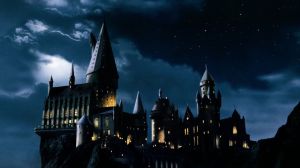The Stormlight Roleplaying Game, at least on its surface, is an amalgamation of familiar D20 mechanics with some few crunchier elements meant to capture the excitement and tension of Brandon Sanderson’s The Stormlight Archive book series. The new game system borrows elements from several different RPGs, including Dungeons & Dragons, Pathfinder, and the Star Wars RPG, with an aim of creating dynamic moments both in and out of combat. Surprisingly, the game appears to be a touch crunchier than Dungeons & Dragons’ 5th Edition, although this is likely a necessity due to the complex magic system and deep world created by Sanderson for his central series in his wide-spanning Cosmere.
Videos by ComicBook.com
The Stormlight Archive is an epic in-progress fantasy book series set on the world of Roshar, which is one part of Sanderson’s shared Cosmere universe. At the outset of the book series, Roshar is beset by constant roaming highstorms akin to hurricanes and is also notable for the appearance of magical spren that to the untrained eye appear to be spirits attracted to different kinds of emotions and elements. The books center on the re-emergence of the Knights Radiant, a group of magically-powered warriors that bond with spren and have different abilities based on the spren they’ve bonded with.
The Stormlight Archive is an incredibly popular book series and Sanderson is one of fantasy’s biggest modern authors. A previous Kickstarter run by Sanderson holds the Kickstarter record for biggest campaign ever, and a previous campaign by Brotherwise to produce miniatures based on the Stormlight Archive raised several million dollars. This is all to say that the upcoming Kickstarter campaign for the Stormlight Archive will likely be one of the biggest tabletop RPG Kickstarters of the year, driven at least in part by name recognition and the fandom surrounding Sanderson’s work.

ComicBook had the opportunity to read through the upcoming Beta Rules Preview for the Stormlight Roleplaying Game, as well as the accompanying Bridge 9 meant to serve as a basic introduction to how a game would work. The game uses a brand new system designed by veteran TTRPG designer Andrew Fischer, one that should feel familiar to Dungeons & Dragons players, but with a handful of wrinkles and subsystems that are more in line with the world that Sanderson created.
For instance, the game uses a D20 roll for checks, but with the addition of a “Plot Die” during key moments that can add either an Opportunity or Complication to the roll. Opportunities (which can also be added when players roll a natural 20) can be exchanged for one of several benefits like dealing critical damage or giving an advantage to another player’s next test or by influencing the narrative of the game in the players’ favor. The GM chooses the result of a Complication (which is also obtained when players roll a Natural 1), with consequences ranging from another player gaining disadvantage to their next test or a negative impact on tests. Opportunities and Complications can also be spent on countdowns that occur within the narrative, providing additional stakes to every roll.
Other notable quirks to the Stormlight Roleplaying Game system is the use of Focus as a metacurrency that players spend to fuel character abilities. There are a number of generic actions that require Focus to use (such as using a medical kit during combat or attacking with an offhand weapon) but the character sheets provided as part of the beta indicate that many abilities both in and out of combat also require Focus to use. The rules beta also notes that Investiture (a magic resource from the Stormlight Archives books) is another metacurrency that eventually comes into play for those who pursue the Knights Radiant character paths.
The game has no saving throws but instead has three kinds of “Defenses” representing a character’s natural resistance to certain kinds of attacks. The game also uses a 3-action system similar to Pathfinder Second Edition in combat, although players can sacrifice an action to take a “Fast Turn,” thus guaranteeing that they can act first in a round of combat. There are numerous Actions players can take in combat, ranging from the standard attacking and moving options to Bracing to force disadvantage on attacks made against them, to a variety of actions specific to different character builds. The three-action system feels very similar to Pathfinder Second Edition, which isn’t a bad thing but may need some adjustment from those only used to 5E games.
Another interesting aspect to the game is that it includes rules for Conversations and Endeavors. Conversations are functionally social duels where players make tests against a character’s Cognitive or Spiritual Defense in order to influence them or gather information, while Endeavors are extended skill tests where players attempt to collectively succeed at a goal through a series of checks, trying to reach a threshold of successes before they hit a certain number of failures. The introductory adventure gives examples of both a Conversation and an Endeavor, with the latter being a simple chase scene where players try to collectively outrun a massive chasmfiend. The Endeavors ruleset look to be particularly appealing because it has clear-cut parameters for successes and failures. The Conversation system seems to be a bit more loosely defined out of deference to many players enjoying pure roleplay, but I personally feel like the system needs some sort of consequence for failing tests, especially as there doesn’t seem to be anything that prevents the players from trying to argue over and over until they succeed.

Players also aren’t bound to a single character progression – instead players use one or more talent trees and build their characters around those as they level up. These weren’t detailed in the rules beta, but other previews indicate that this system is similar to the Star Wars RPG that Fischer previously worked on. What’s interesting is that there are several classes that appear to be non-combat oriented, which is in line with the diverse cast of characters in the Stormlight Archives that includes everything from powerful warriors to scholars and artists. The pre-generated characters include a Scholar and an Ardent, with both characters having abilities designed to either support other players or debuff opponents within combat.
The Rules Beta is clearly just a taste of the Stormlight Roleplaying Game, but my first impression is that the game should succeed in what it’s trying to do – allow players to tell stories similar in scope to the actual Stormlight Archive books. And while there’s a trend towards simpler rulebooks that lean more heavily on narrative storytelling, the Stormlight Archive is a series with a very defined magic system and its readers would probably prefer a game system with similarly defined rules to match. There’s still plenty of room for roleplaying and creativity within the ruleset, especially within the freedom that comes from Conversations and Endeavors, and the combat rules seem to take the best bits of popular games like Pathfinder and Dungeons & Dragons while adding some of their own twists that make sense given the nature of how fights tend to go in Sanderson’s books.
At times, the game leans a little too far into D&D-esque excess at some points – 18 skills is a lot and the rules for each skill aren’t convincing enough to make them a necessity for every character build. I’m also curious as to how scarce the Focus metacurrency will be and whether players will hoard Focus like they do in other games. A lot of that will be dependent on character progression, which isn’t featured in the ruleset.
Based on the Rules Beta, I’m guessing that this game is probably comparable to Dungeons & Dragons 5E in complexity depending on how some unrevealed systems play out, but most players who are familiar with 5E should be able to figure out this game pretty quickly. Perhaps most importantly, it’s clear that the Stormlight Roleplaying Game is made by Stormlight Archive fans and that they’ve set out to create an experience that’s very faithful to those books. While that might somewhat limit the potential playerbase to fans of Sanderson’s work, the Cosmere is a massive body of work with tons of fans and I wouldn’t be surprised to see this system eventually adapted for other Sanderson works as well.
The Stormlight RPG Kickstarter will launch on August 6th.








